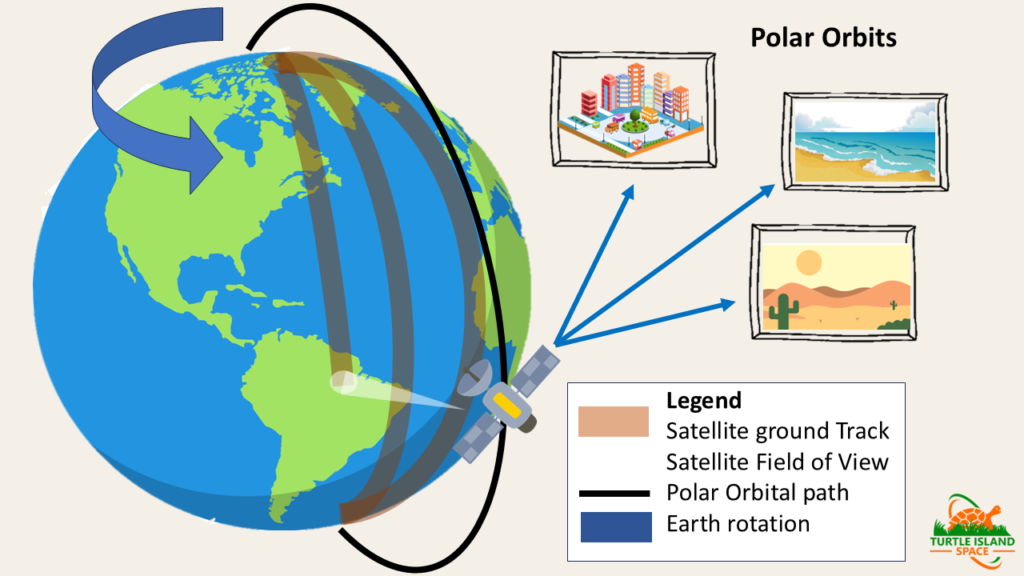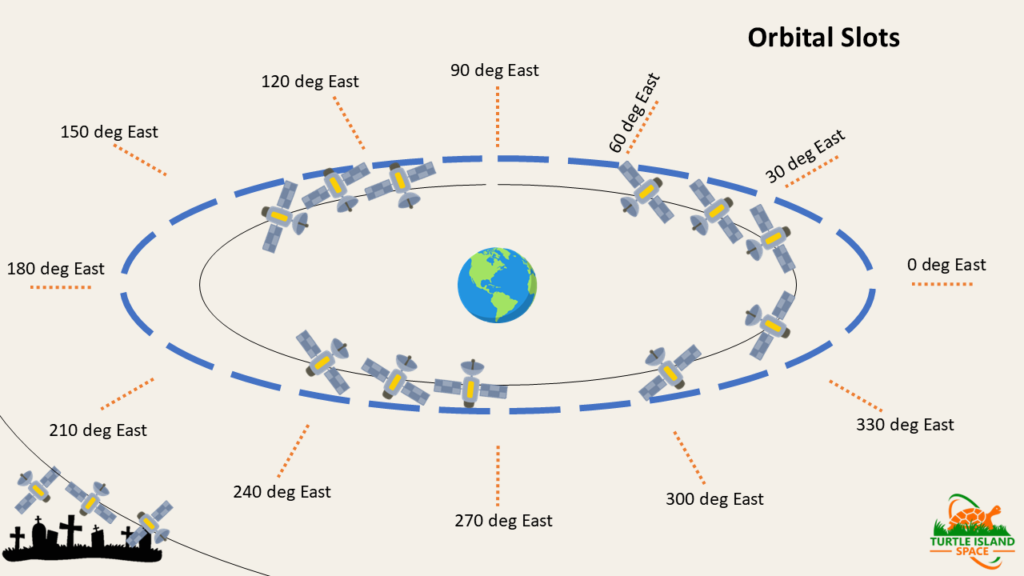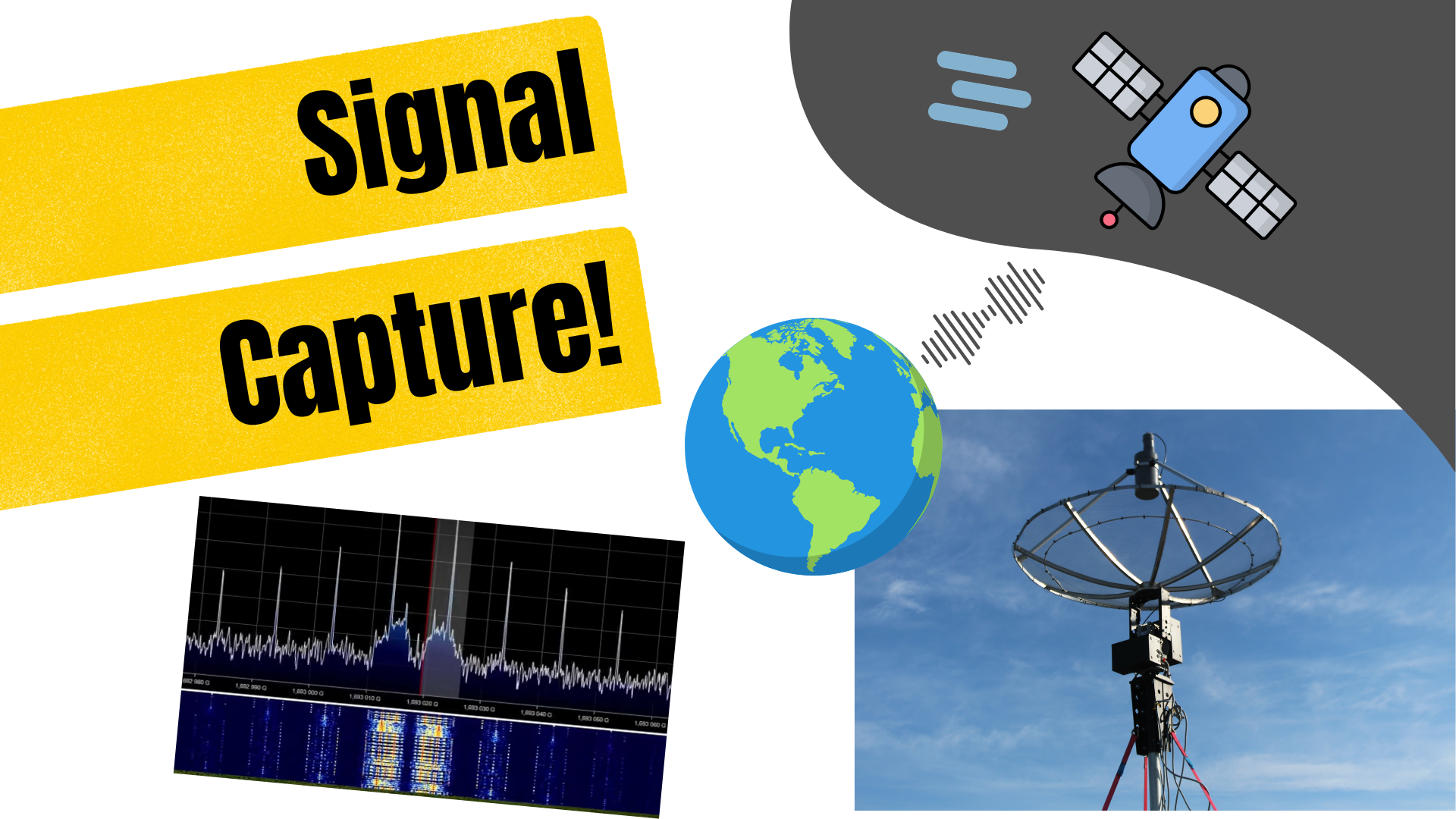Intro2 – Satellites
Introduction
Satellites are essential for a wide range of applications, including telecommunications, weather monitoring, navigation, and Earth observation. The type of orbit a satellite occupies plays a crucial role in determining its functionality and coverage. Two of the most common types of satellite orbits are geostationary and polar orbits, each designed to serve specific purposes based on altitude and trajectory. Another critical aspect of satellite operations is the management of orbital slots, especially for geostationary satellites, to ensure efficient and interference-free use of space. This guide explores the key concepts, advantages, and disadvantages of geostationary satellites, polar orbiting satellites, and the role of orbital slots in satellite communication.

Key Concepts
- Geostationary Satellites (GEO):
- Orbit at an altitude of approximately 35,786 kilometers (22,236 miles) above the equator.
- Appear stationary over a fixed point on Earth as they match the planet’s rotation, completing one orbit every 24 hours.
- Ideal for services that require continuous coverage of the same area, such as telecommunications and weather monitoring.
- Polar Orbiting Satellites:
- Travel in low Earth orbit (LEO) at altitudes between 200 and 1,000 kilometers (124 to 621 miles).
- Pass over the Earth’s poles, covering different areas of the planet as Earth rotates beneath them, eventually providing global coverage.
- Used primarily for Earth observation, scientific research, and environmental monitoring.
- Orbital Slots:
- Geostationary satellites must occupy specific positions, or “orbital slots,” to avoid interference with other satellites.
- Orbital slots are regulated by international bodies like the International Telecommunication Union (ITU) to ensure efficient and orderly satellite placement.
- With an increasing demand for geostationary satellite services, finding available slots is becoming more competitive, particularly over densely populated regions.
Advantages
Geostationary Satellites:
- Constant Coverage: A single geostationary satellite can continuously monitor a large area, providing uninterrupted communication or observation.
- Wide Coverage Area: Positioned high above the equator, a geostationary satellite can cover up to one-third of the Earth’s surface, making it efficient for broadcasting and telecommunications.
Polar Orbiting Satellites:
- Global Coverage: Polar orbiting satellites can eventually cover the entire planet as they pass over different regions with each orbit, including the poles, which geostationary satellites cannot reach.
- High-Resolution Imaging: These satellites fly at lower altitudes, allowing for detailed, high-resolution images of the Earth’s surface, essential for scientific research and environmental monitoring.
Orbital Slots:
- Efficient Use of Space: By allocating specific slots for geostationary satellites, international regulations help avoid signal interference and ensure satellites can operate without affecting one another.
- Stable Operations: Once an orbital slot is assigned, satellites in geostationary orbit can remain in place for long periods, providing consistent services like TV broadcasting and weather observation.
Disadvantages
Geostationary Satellites:
- High Latency: Due to the altitude of geostationary orbit, signals take longer to travel, resulting in noticeable delays, especially in real-time applications like phone calls or internet services.
- Poor Polar Coverage: Geostationary satellites are positioned above the equator, providing minimal or no coverage of the polar regions.
Polar Orbiting Satellites:
- Limited Real-Time Coverage: These satellites only pass over specific areas at intervals, making continuous, real-time monitoring of a single location impossible.
- Frequent Orbital Adjustments: Satellites in polar orbits often require regular adjustments to maintain their trajectories, which adds to operational complexity and costs.
Orbital Slots:
- Limited Availability: The geostationary belt is finite, and with growing demand for satellite services, finding available slots is becoming more challenging, especially over high-demand regions like North America and Europe.
- Signal Interference: Satellites placed too close together in adjacent slots can experience signal interference, potentially degrading the quality of communication services.

Summary
Satellites in geostationary and polar orbits serve distinct purposes based on their altitude, coverage, and mission requirements. Geostationary satellites offer constant coverage of a fixed area, making them ideal for telecommunications and weather monitoring, but they suffer from high latency and limited polar reach. Polar orbiting satellites, on the other hand, provide global coverage with high-resolution imaging but lack real-time coverage of any one area and require frequent adjustments. Orbital slots are essential for organizing the placement of geostationary satellites to prevent interference, but the limited availability of these slots has created challenges as the demand for satellite services grows. Each type of orbit and slot management approach has advantages and limitations, making them complementary in supporting a broad range of satellite-based services.

